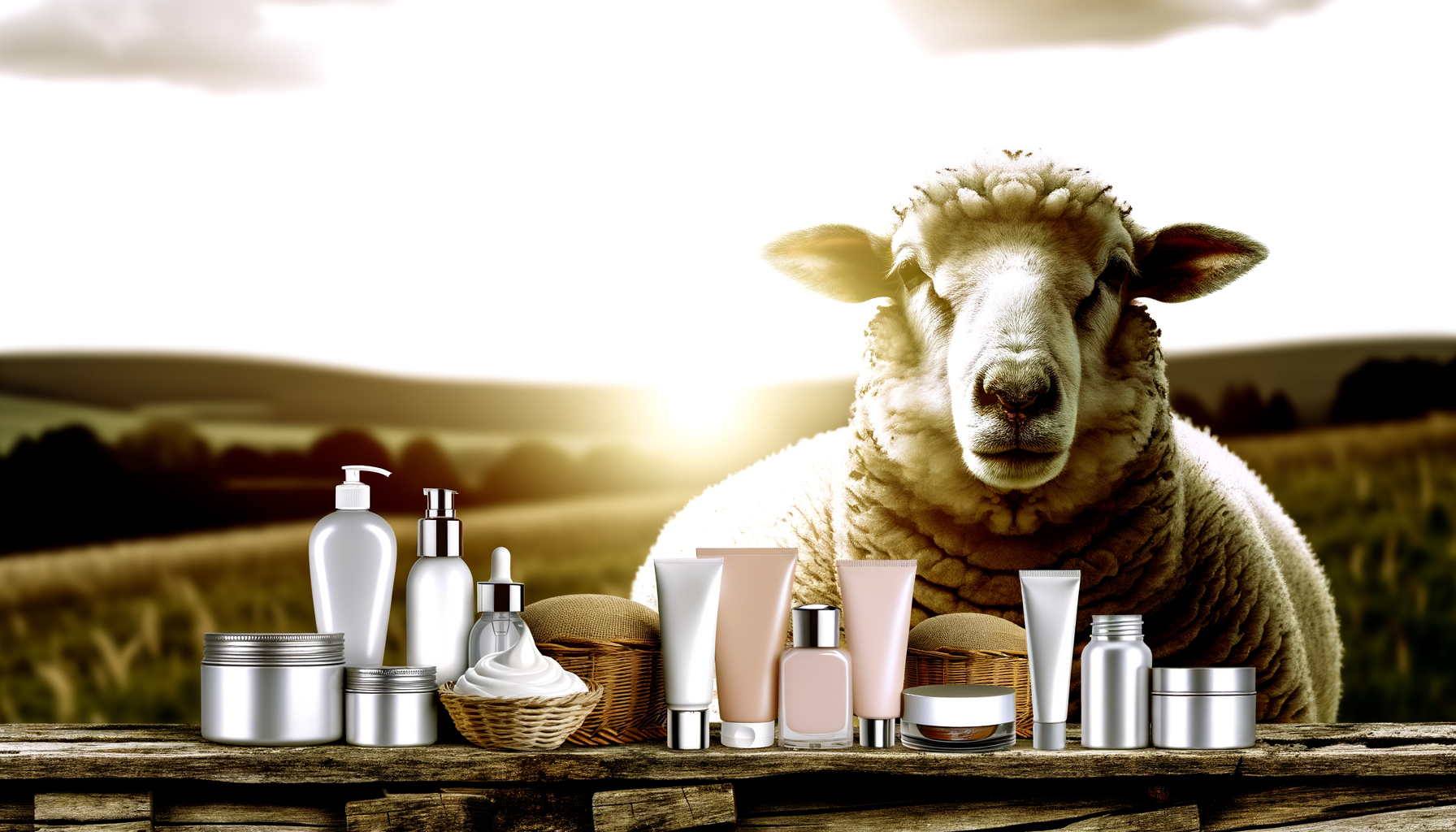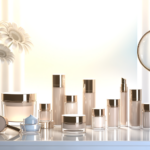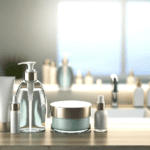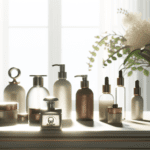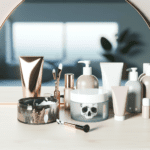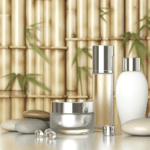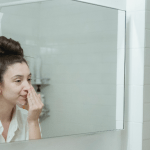Introduction to Lanolin
What is Lanolin?
Lanolin is a natural substance secreted by the sebaceous glands of sheep, which conditions and protects their wool. Often referred to as “wool fat,” lanolin is a misnomer as it lacks the triglycerides to be considered a true fat. Extracted from shorn wool, lanolin undergoes a centrifuge process to separate it from impurities, resulting in a substance that is widely utilized in the skincare and cosmetics industry for its emollient properties.
Historical Use in Skincare
The use of lanolin in skincare is not a modern phenomenon. Historical records indicate that lanolin has been used for thousands of years, with various cultures recognizing its skin-protective qualities. Its refined form has been incorporated into ointments and other skincare products for over a century, providing evidence of its enduring popularity and perceived effectiveness in skin treatment and protection.
Common Products Containing Lanolin
Lanolin is a common ingredient in a variety of skincare and personal care products. Its moisturizing properties make it a staple in items such as:
- Lip balms
- Body lotions
- Nipple creams for breastfeeding mothers
- Moisturizers for dry skin conditions
- Hair care products
These products often combine lanolin with other humectant ingredients like aloe, honey, or glycerin to enhance moisture retention.
Perceived Benefits of Lanolin
Lanolin is celebrated for its ability to hydrate the skin and reduce water loss, with studies indicating a 20 to 30 percent reduction in transepidermal water loss. Its emollient nature allows it to soften skin, improving the appearance and feel of dry or flaky areas. Lanolin can also plump the skin by holding twice its weight in water, which may reduce the appearance of fine lines and wrinkles. In hair care, lanolin’s moisture-retaining quality combats dryness when applied to wet or moist hair. Additionally, lanolin is effective in treating cracked nipples during breastfeeding and chapped lips, as it can penetrate the skin barrier more deeply than some other ingredients.
Despite its widespread use and benefits, lanolin has been associated with allergic reactions and sensitivities in some individuals. As a result, consumers are encouraged to perform patch tests before using new lanolin-containing products and to consult with healthcare professionals if they have concerns about allergies or potential reactions.
The Science of Lanolin
Chemical Composition
Lanolin, often referred to as wool fat, is a complex mixture of long-chain waxy esters, hydroxy esters, diesters, and alcohols. Despite its name, lanolin contains no triglycerides and is not a true fat. Its unique composition closely resembles that of human sebum, the skin’s natural lubricant, making it highly compatible with our skin’s biology. Lanolin’s ability to hold twice its weight in water contributes to its effectiveness as a skin hydrator and barrier.
Skin Absorption and Effects
When applied to the skin, lanolin works by forming an occlusive barrier, which slows down transepidermal water loss and helps to maintain moisture levels in the skin. This occlusive action is complemented by lanolin’s emollient properties, which soften and smooth the skin. Studies have shown that lanolin can reduce water lost through the skin by 20 to 30 percent, making it particularly beneficial for dry, rough, or flaky skin areas. Lanolin is also known to penetrate the skin barrier, enhancing its moisturizing and protective effects from within.
Comparison with Synthetic Emollients
Synthetic emollients, such as petroleum jelly and mineral oil, are widely used in skincare for their barrier-forming and moisture-retaining properties. However, lanolin is often favored in natural skincare formulations due to its biocompatibility and ability to not only prevent water loss but also to absorb moisture from the air. Unlike some synthetic alternatives, lanolin has a complex composition that more closely mimics the skin’s natural lipids. This can result in a more natural and less occlusive feel, allowing the skin to breathe and function more normally while still receiving the hydration and protection it needs.
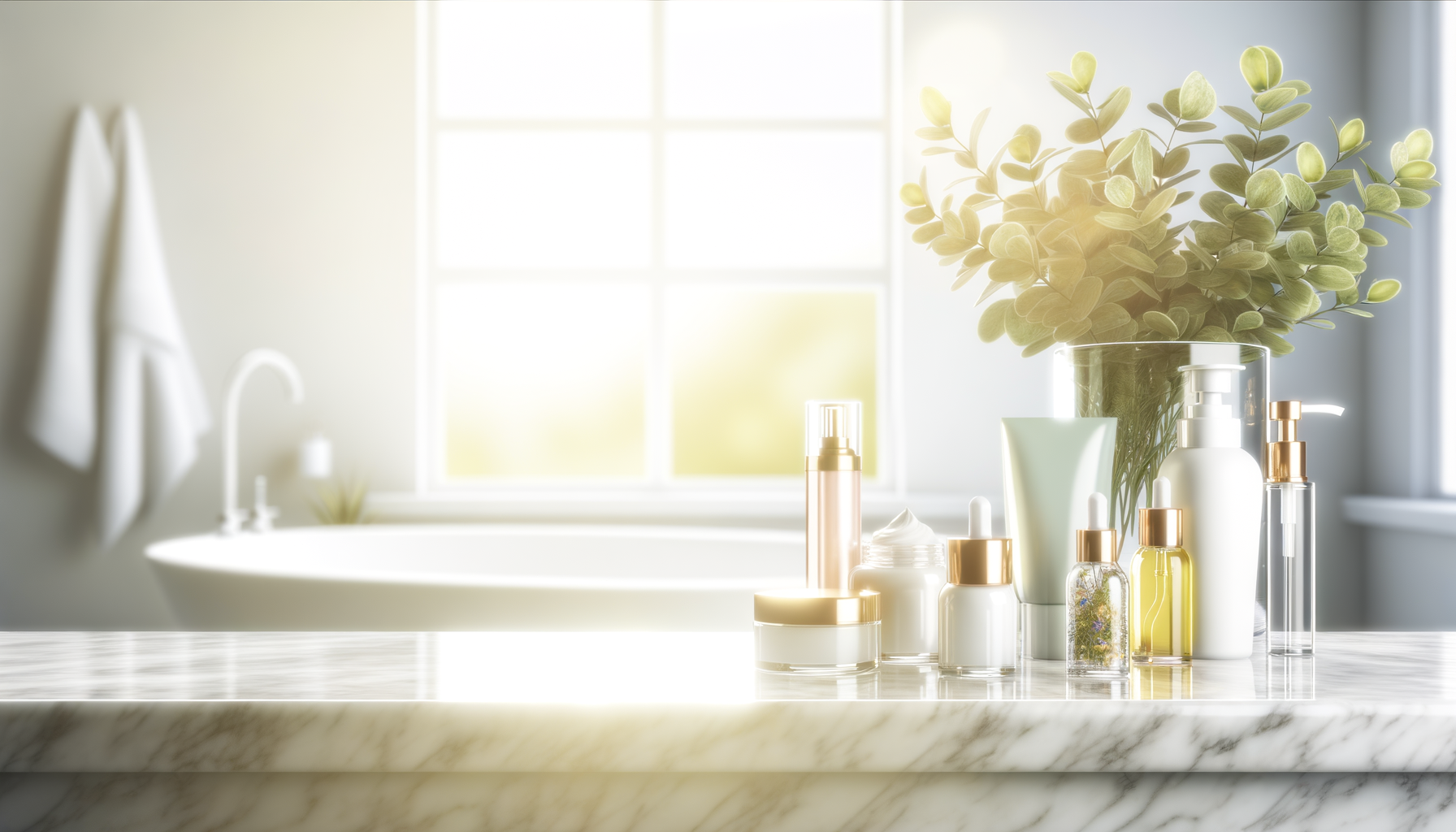
Popular Read: Endocrine Disruptors in Skincare: What You Need to Know
Health and Wellness Concerns
Potential Allergens and Irritants
Lanolin, a natural wax derived from sheep’s wool, is known for its moisturizing properties in skincare. However, it is not without its potential drawbacks. For individuals with a wool allergy, lanolin can act as an allergen, causing reactions ranging from mild irritation to severe allergic responses. Symptoms may include itching, redness, swelling, and in extreme cases, anaphylaxis. Additionally, lanolin has been identified as a skin sensitizer, which means it has the potential to cause allergic reactions upon contact with the skin. This is particularly concerning for those with sensitive or compromised skin barriers, such as individuals with eczema or those recovering from skin procedures.
Endocrine Disruptors and Hormonal Impact
While lanolin itself has not been widely studied for endocrine-disrupting effects, the concern arises from the potential contamination of lanolin with pesticides and other chemicals used in sheep farming. These contaminants can act as endocrine disruptors, interfering with the body’s hormonal systems. Endocrine disruptors are known to potentially cause reproductive issues, developmental problems, and even neurological effects. Therefore, the purity of lanolin is crucial, and consumers are advised to seek out products that guarantee the absence of harmful contaminants.
Links to Breast Cancer and Other Health Risks
The discussion around lanolin and its link to breast cancer is complex and multifaceted. While lanolin itself has not been directly linked to breast cancer, the concern again relates to the possible presence of pesticide residues and other environmental toxins within lanolin that could pose health risks. These substances may have carcinogenic properties or contribute to the development of other health conditions. It is essential for consumers to be aware of these potential risks, especially when using lanolin-containing products on areas of the body with thinner skin or in proximity to breast tissue, such as nipple creams for breastfeeding mothers.
In conclusion, while lanolin can be a beneficial ingredient in skincare, it is not without its health and wellness concerns. Allergies and sensitivities to lanolin can pose significant issues for certain individuals. Moreover, the potential for lanolin to be contaminated with endocrine disruptors and carcinogens raises valid concerns about its safety. Consumers should be vigilant about the source and purity of lanolin in their skincare products and consider these factors when making informed choices about their health and wellness.
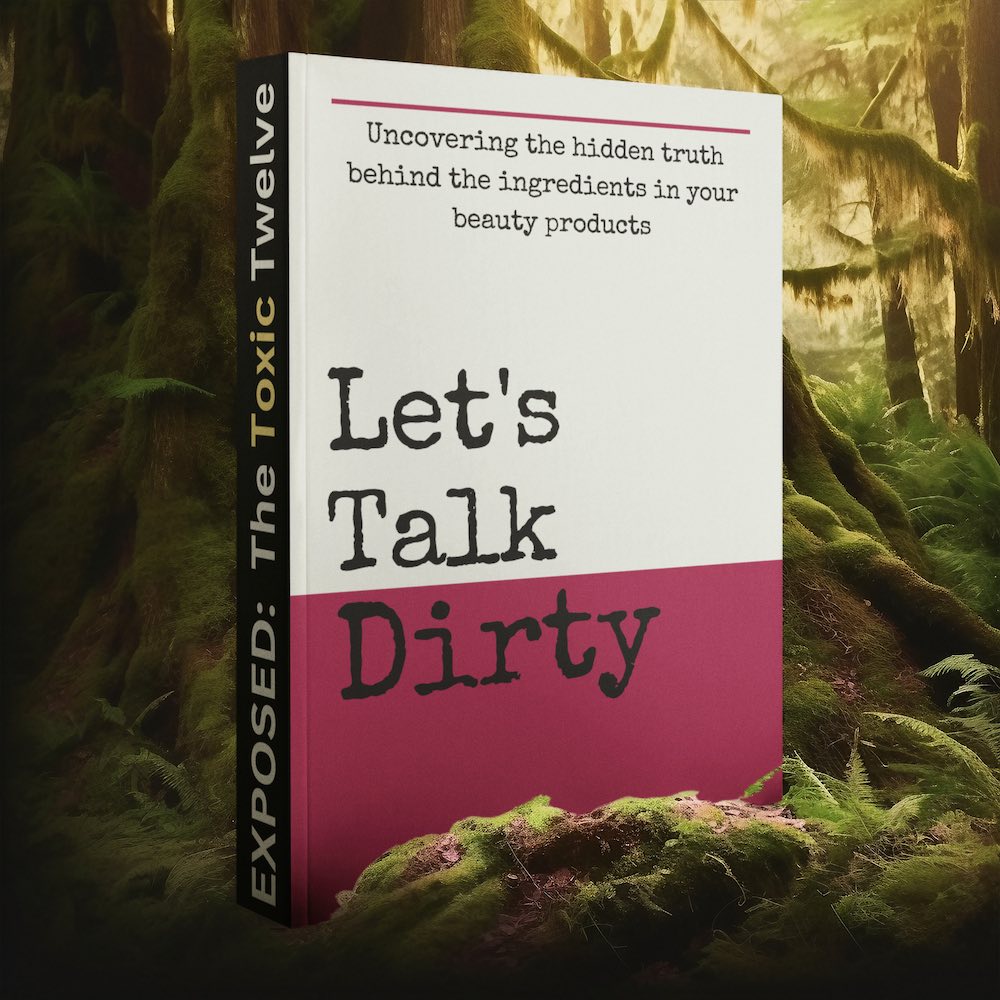
Feeling You Have a Right to Safe Beauty & Fem Care?
If so, it may be time for a change. It starts with knowledge. We have a few suggestions in our new guides.
Lanolin in the Age of Clean Beauty
The Clean Beauty Movement
The Clean Beauty Movement has surged in popularity as consumers increasingly seek products that are not only effective but also safe for their health and the environment. This movement emphasizes transparency in ingredient sourcing, manufacturing processes, and product labeling. It advocates for the use of non-toxic, sustainable, and ethically sourced ingredients, while shunning those with potential health risks. The movement has reshaped the beauty industry, compelling brands to reevaluate their formulations and cater to the growing demand for “clean” products.
Lanolin’s Place in Natural Skincare
Lanolin, a natural wax derived from sheep’s wool, has long been cherished in skincare for its emollient and protective qualities. As a natural ingredient, lanolin aligns with the ethos of the Clean Beauty Movement, offering a sustainable option for intense moisturization. However, the sourcing of lanolin is critical; ethical concerns arise from the conventional wool industry’s practices. Clean beauty advocates often seek lanolin from responsible wool standards (RWS) or mulesed-free sources to ensure animal welfare and align with the movement’s principles.
Consumer Perceptions and Misconceptions
Despite its natural origins, lanolin suffers from misconceptions among consumers. Some associate lanolin with skin irritation or allergies, although such reactions are relatively rare. Others may be unaware of the potential contamination with pesticides if not properly refined. Moreover, the association of lanolin with the wool industry’s inhumane practices has led to a preference for plant-based alternatives among ethically conscious consumers. To address these concerns, brands must prioritize transparency and educate consumers on the quality and sourcing of the lanolin used in their products.
As the clean beauty trend continues to evolve, lanolin’s role in skincare remains significant, provided it is sourced and processed in a manner that upholds the values of safety, sustainability, and ethical responsibility. Consumers are encouraged to look beyond the ingredient list and understand the broader implications of their skincare choices in the context of clean beauty.

Do you have the most commonly used but toxic, disease bringing chemicals in your skin care? Many chemicals in skincare are hormone disruptors and make menopause symptoms worse.
Find out more…
Navigating the Market
Identifying Truly Natural Products
In the quest for healthier skin, consumers are increasingly turning towards natural skincare products. However, the challenge lies in distinguishing genuinely natural formulations from those merely marketed as such. To identify truly natural products, scrutinize ingredient lists for plant-derived components like aloe vera, shea butter, and jojoba oil. These ingredients should be prominently featured and not lost amidst a sea of synthetic compounds. Additionally, certifications such as COSMOS Organic, USDA Organic, or Ecocert can provide assurance of a product’s natural and organic content. Sustainable packaging, such as glass or recyclable materials, is another hallmark of genuine natural skincare products.
Understanding Labels and Certifications
Labels and certifications are vital tools for consumers to navigate the natural skincare market. They serve as a beacon of trust, indicating that a product has met rigorous standards. When examining products, look for certifications like COSMOS Organic, USDA Organic, or Ecocert, which ensure a significant percentage of organic ingredients and adherence to environmental standards. These labels are not just stamps of approval but are backed by thorough testing and compliance with strict regulations. By choosing products with these certifications, consumers can be confident in their skincare choices.
The Role of Personalization in Product Choice
Personalization is becoming increasingly important in the skincare industry. With the understanding that everyone’s skin is unique, products that cater to individual needs and preferences are in high demand. Personalization can range from selecting products based on skin type to customized formulations that address specific concerns. Brands that offer personalized skincare solutions are gaining popularity as they empower consumers to make informed decisions that align with their personal skincare goals. Embracing personalization allows for a more targeted approach to skincare, potentially leading to better outcomes and higher satisfaction.
Alternatives to Lanolin
Plant-Based Emollients
For those seeking natural alternatives to lanolin, plant-based emollients offer a cruelty-free and often hypoallergenic solution. These emollients, derived from sources such as shea butter, cocoa butter, and various plant oils, provide similar moisturizing benefits without the risk of animal-derived allergens. Shea butter, extracted from the nuts of the African shea tree, is rich in fatty acids and vitamins, making it an excellent moisturizer and skin soother. Cocoa butter, obtained from cocoa beans, is another highly moisturizing agent that can improve skin elasticity and has natural antioxidant properties.
Plant oils like jojoba oil, squalane (derived from olives), and argan oil are also popular lanolin substitutes. Jojoba oil closely mimics the skin’s natural oils, providing deep hydration without clogging pores. Squalane is a lightweight, non-comedogenic oil that is easily absorbed, offering intense moisture and skin barrier protection. Argan oil, rich in vitamin E and essential fatty acids, nourishes the skin and can help to reduce the appearance of fine lines and wrinkles.
Holistic Approaches to Skincare
Adopting a holistic approach to skincare involves looking beyond individual ingredients and focusing on overall skin health. This can include lifestyle changes such as a balanced diet, adequate hydration, and stress management, all of which contribute to skin vitality. Additionally, practices such as facial massage, regular exfoliation, and the use of gentle, pH-balanced skincare products can enhance skin’s natural ability to retain moisture and repair itself. By taking a comprehensive view of skincare, individuals can achieve healthy, hydrated skin without relying solely on products like lanolin.
In conclusion, while lanolin has been a staple in skincare for its moisturizing properties, there are numerous plant-based and synthetic alternatives that offer similar benefits without the associated health and wellness concerns. By exploring these options and adopting a holistic approach to skincare, consumers can make informed decisions that align with their personal values and skincare needs.
Do you know the 3 main ways how your body is exposed to harmful chemicals, which affect your hormones, your thyroid, health and beauty?
If not, it may be time to learn about them. It takes about 1-2 minutes.
We have a few suggestions how to avoid these silent health and immune system killers in our new guide.
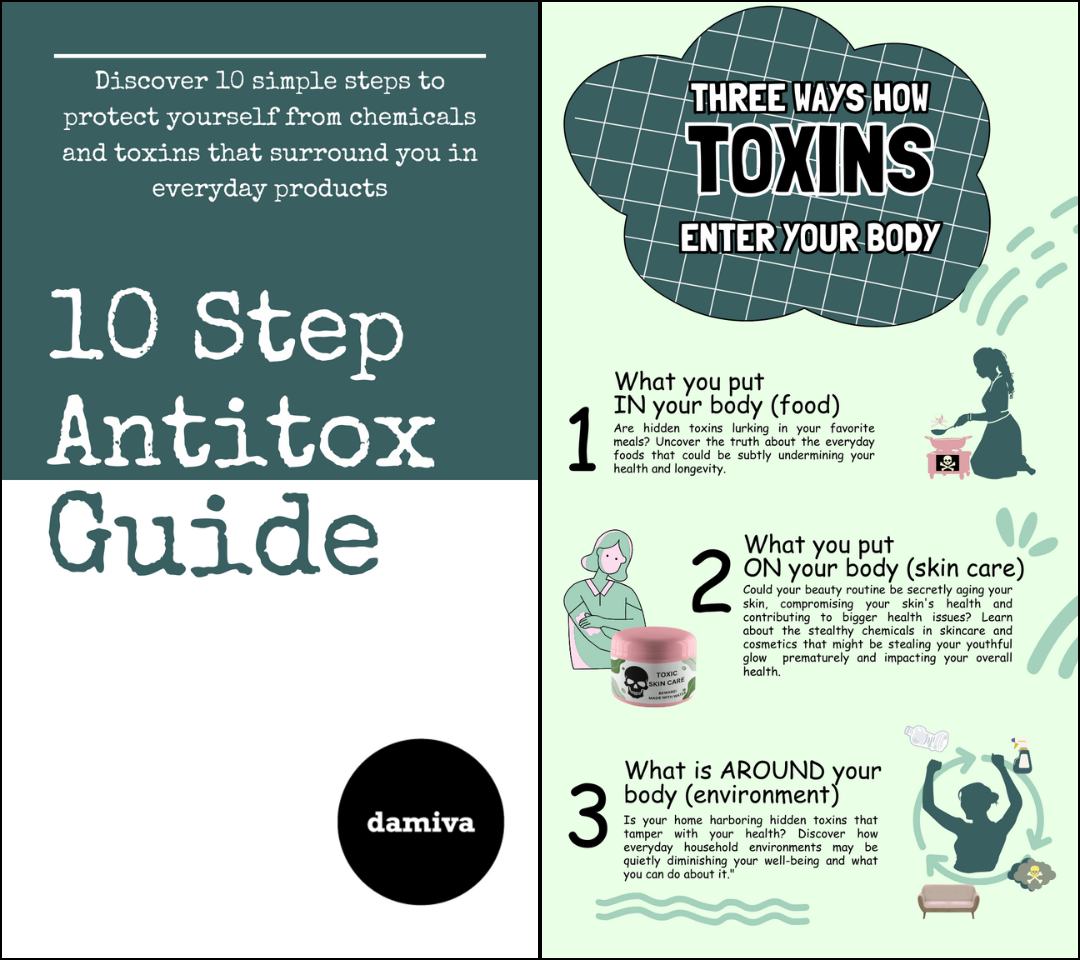
Conclusion: Making Informed Choices
Balancing Benefits and Risks
When it comes to incorporating lanolin or any ingredient into your skincare routine, it is essential to balance the perceived benefits with potential risks. Lanolin has been lauded for its emollient properties, providing deep moisturization and protection for the skin. However, as with any natural ingredient, there is a risk of allergenic reactions or sensitivities. It is crucial to consider your skin type, any known allergies, and the overall formulation of the product. Patch testing a new product can help determine its suitability for your skin and minimize the risk of adverse reactions.
Empowering Consumers with Knowledge
Knowledge is power in the realm of skincare. Consumers should be equipped with the necessary information to make informed decisions about the products they use. Understanding the source, benefits, and potential allergens associated with lanolin can help consumers navigate the market more effectively. Moreover, familiarizing oneself with ingredient labels, certifications, and the implications of terms like “natural” and “clean beauty” can demystify product choices. When in doubt, consulting with a dermatologist can provide tailored advice and peace of mind.
Future Trends in Skincare Ingredients
The skincare industry is ever-evolving, with new trends and ingredients emerging regularly. The rise of clean beauty has seen a shift towards more transparent labeling and a focus on sustainability. As consumers become more environmentally conscious, the demand for ethically sourced and produced ingredients is likely to increase. Lanolin, as a natural by-product of wool, has the potential to align with these trends, provided that ethical practices are followed in its sourcing. Additionally, advancements in technology may lead to the development of new lanolin derivatives or plant-based alternatives that offer similar benefits without the risk of allergens. Staying informed about these trends will enable consumers to continue making choices that align with their values and skincare needs.
In conclusion, the use of lanolin in skincare is a personal choice that should be made with careful consideration of its benefits and potential risks. By empowering themselves with knowledge and staying abreast of industry trends, consumers can navigate the complex world of skincare ingredients with confidence. Whether choosing lanolin-based products or seeking alternatives, the key is to prioritize skin health and well-being above all.
